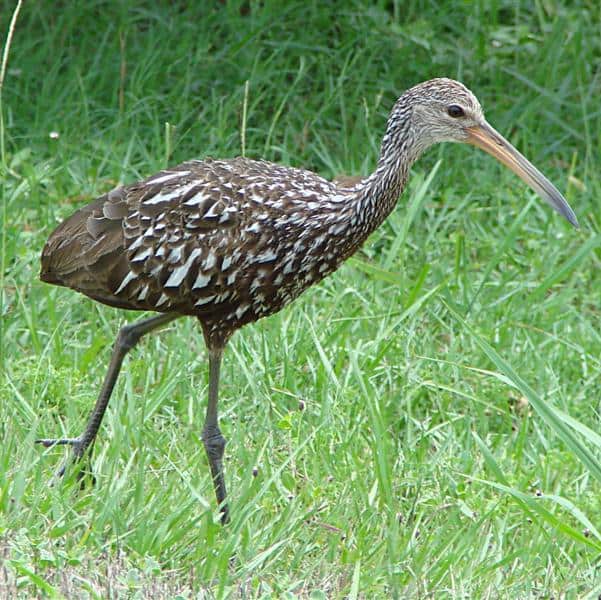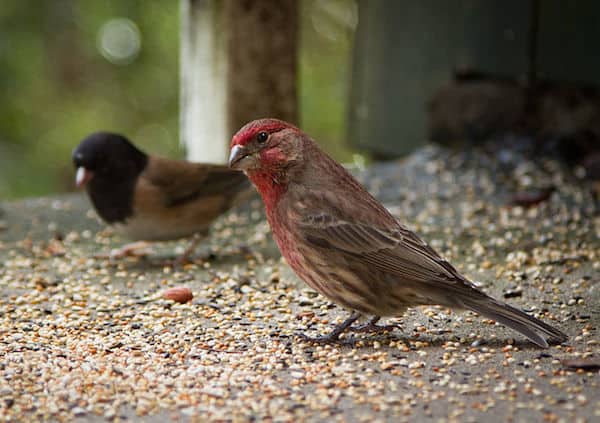What Does a Limpkin Look Like?
The limpkin is a large water bird with a heron-like body shape. It has distinct, stretched out proportions with a long neck, long legs, and a long, slightly curved bill. Its plumage is dark brown with intense white streaking on its head and neck that lessens as it continues down onto the body. This uncommon and inconspicuous species often walks slowly along water’s edge.
Listen for
The limpkin’s call is a series of loud, repetitive screams krrr-ow, krrr-ow. You can typically hear it the evening or at night.
Find it
In the United States, the limpkin is rarely found outside of Florida, where it resides in open, fresh-water marshes, swamps, ponds, and lakes. Its range also stretches across the Caribbean islands, the coasts of southern Mexico, throughout Central America, and in South America to northern Argentina. In these areas it is most common in woodland swamps and marshes.
Diet
The limpkin feeds primarily on large snails, especially apple snails. It also eats insects, frogs, lizards, and crustaceans. It forages by walking slowly in or near shallow water, where it pokes around vegetation and in the mud. When it picks up a snail it uses its long, tweezers-like bill to extract it without breaking the shell.
Limpkin Nesting Behavior
The limpkin nests close to water, occasionally in loose colonies. The nest is built on the ground or in a shrub or tree near or above water in aquatic vegetation. Both sexes work together to build the nest, constructing a bulky, thick platform of grass, sticks, vines, and leaves, and lined with finer plant matter.
The female lays 3-8 eggs that can vary in appearance from a yellowish off-white to a dull green with brown, purple, or gray splotches. Both parents incubate the eggs 27 days before hatching. The downy young are able to leave the nest immediately, after which a parent will guide and assist them to a brooding platform they have built, and tend them until they are independent, about 10 weeks.




